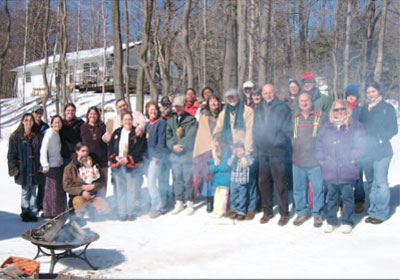
Once the undisputed lords of southeastern Pennsylvania, the Lenape Indians disappear from the state’s history after their forcible removal westward in the 1700s. Although the federal, state, and academic authorities have maintained that no Lenape remained in Pennsylvania at the close of the 18th century, this position is belied by the existence of direct descendants of Lenape people who chose to stay in Pennsylvania. Though some of these Lenape people intermarried with European settlers, members of this lineage have faithfully upheld their Native traditions for more than two hundred years. Fearing the persecutions suffered by their contemporaries in the American Indian community, these Lenape have kept their ancestry a well- guarded secret. The extraordinary stories of these families will be revealed for the first time on September 13, 2008, in the Penn Museum’s new exhibition in the Jacqueline W. and John C. Hover II Gallery, Fulfilling a Prophecy: The Past and Present of the Lenape in Pennsylvania.
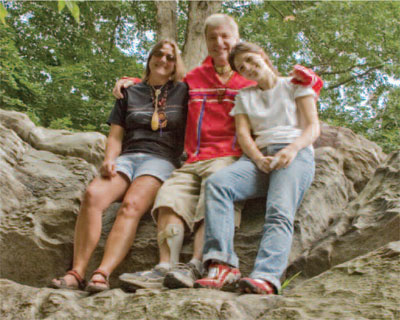
The genesis of the exhibit was a project undertaken by Abigail Seldin in 2006–2007 as part of the Penn Museum’s Research Experience for Undergraduates program “Native Voices” (see Expedition 49(3):30-35). The exhibit’s earliest plans called for a broad treatment of the trek of the Lenape people from Pennsylvania to their current locations in Canada, Ohio, Indiana, Illinois, Wisconsin, Kansas, and Oklahoma. The focus of the project changed dramatically, however, when Seldin joined Robert W. Preucel, the Gregory Annenberg Weingarten Curator of North America, Lucy Fowler Williams, the Jeremy A. Sabloff Keeper, and William Wierzbowski, the Associate Keeper, of the Museum’s American Section, to bring a traditional Lenape paddle to a Maple Ceremony being held in the Pocono Mountains by the Lenape Nation of Pennsylvania—a community formed by Lenape descendants who remained in Pennsylvania.
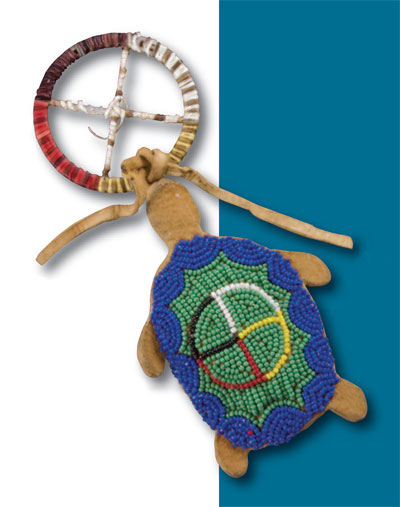
At the Maple Ceremony, members of the Lenape Nation began to tell Seldin their history. Though the stories of the Lenape people who left Pennsylvania in the 18th century are of undeniable importance, it soon became apparent that the community here in Pennsylvania had an interest in working with the Museum to tell their own extraordinary story.
Several weeks later, Seldin met with the Tribal Council, which gave its blessing to the exhibition. Chief Robert Red Hawk Ruth and Shelley DePaul, then Tribal Secretary, joined Seldin as Co-Curators of the exhibit, and other Lenape elders agreed to serve in an advisory capacity. Explaining the significance of working on this exhibit, Chief Ruth declared “all my life, museums have been telling me that I am from a Stone Age culture. Working with the Museum at Penn is an opportunity for us to teach people more about our history and our culture.”
As one would expect from a truly collaborative exhibition, the content and design of Fulfilling a Prophecy respects and integrates both Native and Museum approaches to the organization and communication of knowledge.
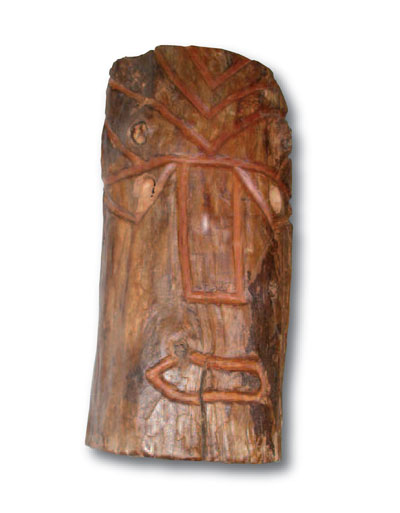
In March 2007, the team decided to tell the history of the Lenape through the framework offered by the “Prophecy of the Fourth Crow”—a traditional story of the Lenape and the inspiration for the title of the exhibition. Handed down over countless generations, the story speaks of time passing through the flights of four different crows. Chief Ruth summarizes the current interpretation of the Prophecy in the following way: “We now know that the First Crow was the Lenape before the coming of the Europeans. The Second Crow symbolized the death and destruction of our culture. The Third Crow was our people going underground and hiding. The Fourth Crow was the Lenape becoming caretakers again and working with everybody to restore this land.”
Plans for the exhibition include a number of creative compromises beyond employing the “Prophecy of the Fourth Crow.” The exhibit emphasizes issues of identity and cultural survivance (Gerald Vizenor’s term for survival + resistance), and addresses those issues with information drawn from Lenape oral histories, the traditional knowledge of their elders, as well as the more typical anthropological and historical texts. To illustrate this narrative, Fulfilling a Prophecy will feature objects lent by Lenape individuals and a number pieces from the Museum’s own collections.
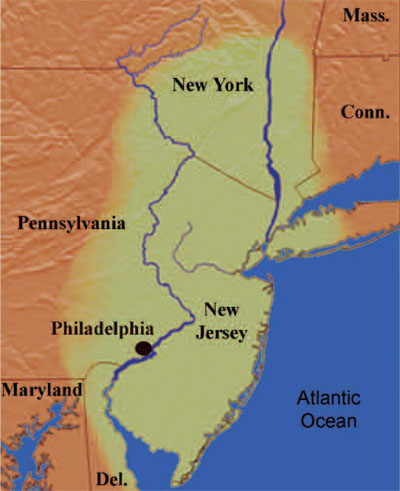
For the people of the Pennsylvania area, the exhibit provides an exciting reintroduction to their Lenape neighbors and an opportunity to learn about a missing chapter in Pennsylvania history. The focus on the Lenape history in Pennsylvania together with the full integration of Chief Ruth and DePaul into the curatorial process makes Fulfilling a Prophecy a story of presence, rather than absence.
DePaul points to the importance of this, noting “we are still here, carrying on the traditions of our ancestors in a way that not only preserves our history, but also makes sense and restores balance in our world today. We are, indeed, ‘Living Lenape’ and not just a part of history.” She clearly articulates the empowering effects the exhibit will have on Lenape youth, stating, “it will be very thrilling indeed, for all of our children, to see our own culture and history unfold through the stories and artifacts of our people and to see them displayed alongside many of the other great cultures of the world.”
“The Prophecy of the Fourth Crow”
Long ago it was said a fox it will be loosened on the earth.Ok nen luwe newa ahasak xu peyok.
Also it was said four crows they will come.Netamixink na ahas kenthu li guttitehewagan wichi Kishelemukonk.
The first crow he flew the way of harmony with Creator.Nisheneit na ahas kwechi pilito entalelemukonk, shek palsu ok ankela.
The second crow he tried to clean it the world, but he became sick and he died.
Nexeneit na ahas weneyoo ankelek xansa ok koshiphuwe.
The third crow he saw him dead his brother and he hid.
Neweneit na ahas kenthu li guttetehewagan lapi wichi Kishelemukonk.
The fourth crow he flew the way of harmony again with Creator.
Kenahkihechik xu withatuwak xkwith- akamika.
Caretakers they will live together on the earth.
